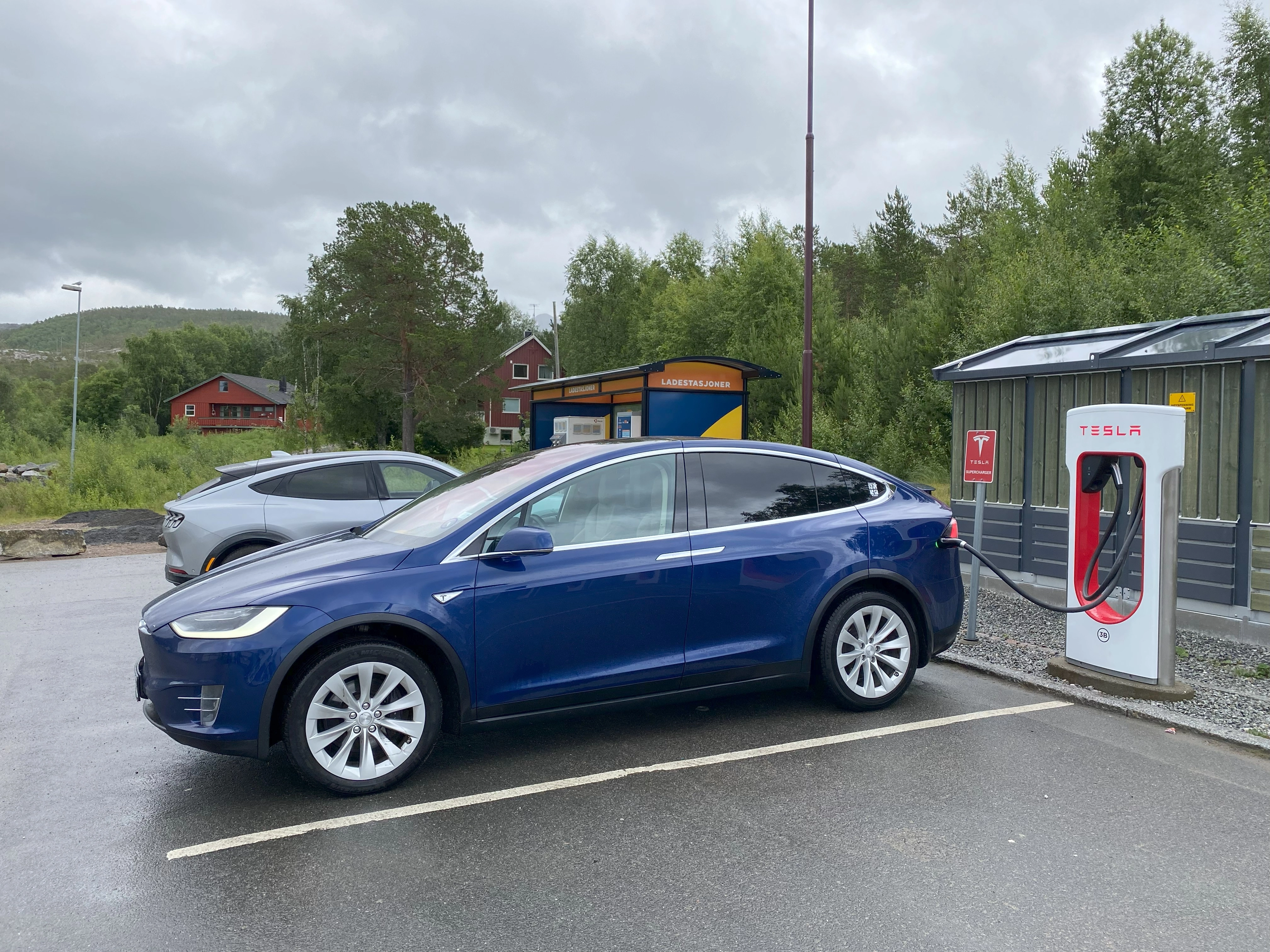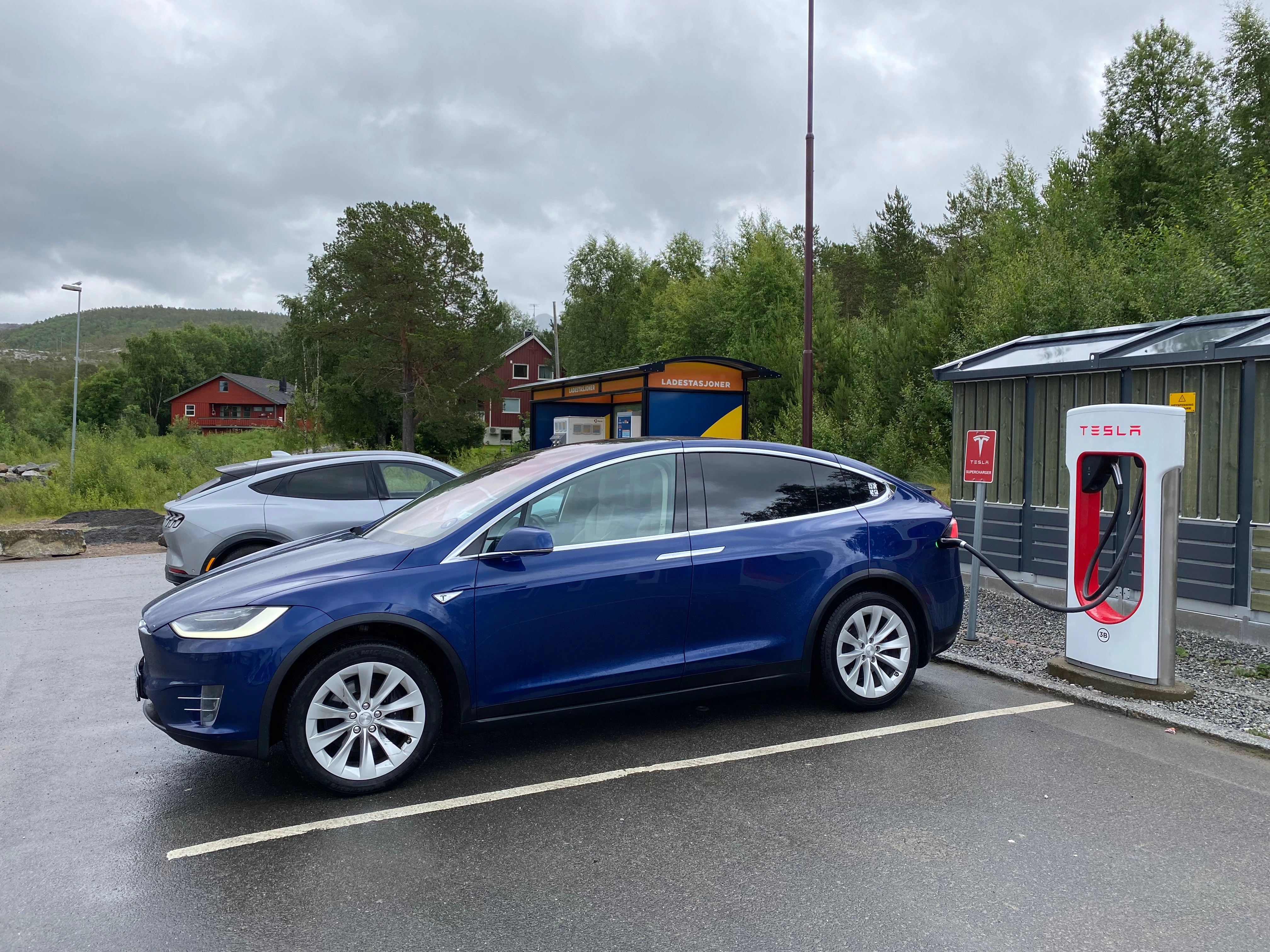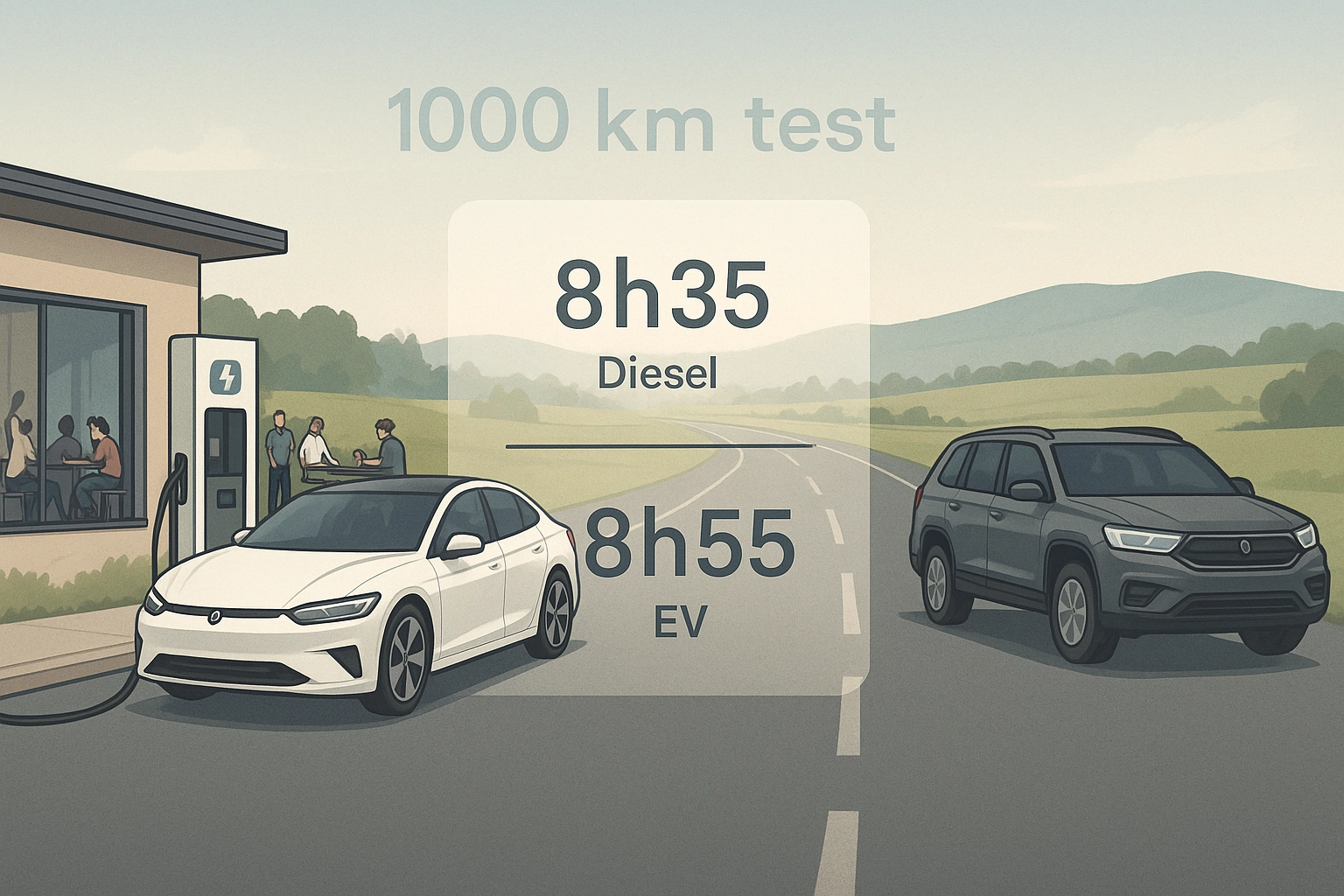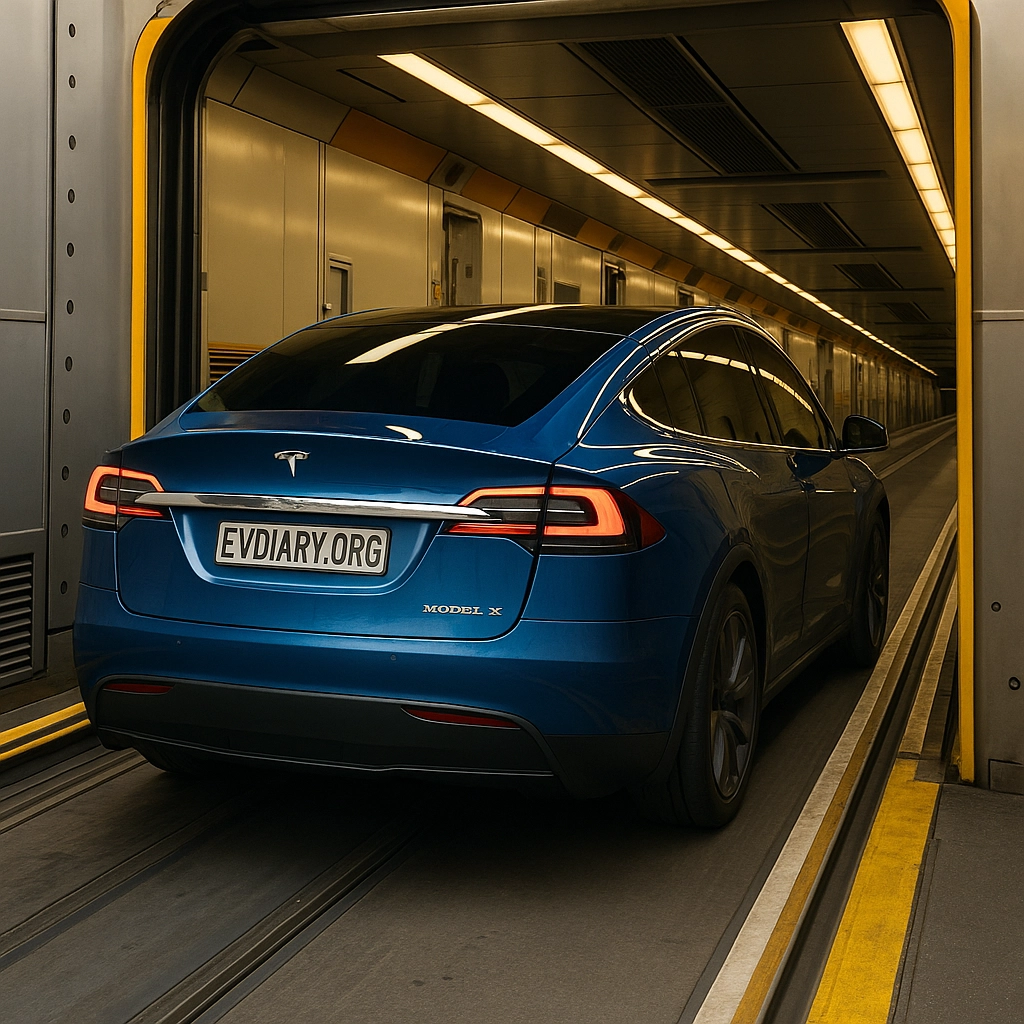🚀 1. Introduction: Why This Trip?
In the summer of 2022, we set out on an electric road trip from Harstad to Switzerland—a journey combining vacation, family time, adventure, and the challenge of seeing how a slightly older EV would perform across Europe. Our destination was a holiday home in Lenzerheide, nestled in the Swiss Alps.
We've been doing home exchanges through Intervac since our children were small, and this was our fourth trip to Switzerland—but the first with an electric vehicle. That added a new layer of planning and curiosity: how would it actually work to drive all the way from northern Norway to the Alps in a Tesla Model X 90D?
The Model X 90D isn’t known for its long range, but it holds up well with around 300 km (186 miles) per charge under normal conditions. The car was packed with luggage—and anticipation—and with five people on board, comfort and charging logistics were essential.
This wasn’t our first electric adventure. The previous summer, in 2021, we drove from Harstad to Moss with a camper trailer, which drastically reduced our range to 100–120 km between charges. That gave us some much-needed experience with EV travel—especially when it comes to planning, flexibility, and patience.
We allowed plenty of time, planned a relaxed pace, and added a healthy dose of Geocaching along the way. This trip was never just about the destination—it was about enjoying the road itself.
🗺 2. Itinerary Overview
We chose to take it slow, turning the journey itself into part of the holiday. Over eight days, we made our way through Norway, Germany, Austria, Liechtenstein, and into Switzerland—soaking in landscapes, cities, and surprise moments.
Day 1: Harstad – Grong (approx. 740 km)
We started the day with an early ferry from Lødingen to Bognes—standard procedure for road trips from northern Norway. Early departure gave us time to make progress and enjoy the day. Geocaching gave us good excuses to make scenic stops.
We arrived at Grong Hotel in the evening. The Tesla Superchargers just outside made it a great overnight spot—but I chose not to charge, knowing we had time the next morning.
Day 2: Grong – Lillehammer (approx. 520 km)
Breakfast, freshening up—and a top-up charge outside the hotel. A practical way to warm up the battery and start the day with range.
We made Geocaching stops throughout the day and rolled into Lillehammer in the afternoon. We had booked a family apartment at the Tourist Center, and I managed to plug in before bed.
✈️ Day 3: Lillehammer – Oslo via Gardermoen (approx. 200 km)
No breakfast included, so we stopped in Brumunddal. The kids picked McDonald's—perfect for food, car wash, and charging in one go.
Later, we picked up the rest of the family at Gardermoen Airport. Our group grew from 3 to 5, and it felt like the holiday really started. A quick Oslo sightseeing loop wrapped up the day before heading for the ferry.
⛴ Day 4: Oslo – Kiel by ferry
We had a calm morning—the ferry didn’t leave until 2 PM. We explored Oslo and packed at our own pace.
Onboard, the five of us shared a single cabin. It was tight, but we didn’t need much space with all the activities onboard. The ferry was a fun break in the trip—though expensive. We’ll likely choose a cheaper and more flexible route next time.
Day 5: Kiel – Berlin + city walk (approx. 340 km)
We hit the road again and headed south toward Berlin. Along the way, I enjoyed the first Currywurst of the trip—a must in Germany. Grilled sausage, ketchup, curry seasoning. Simple. Delicious.
In Berlin, we visited top sights: Brandenburg Gate, the Reichstag, and the Holocaust Memorial. We ended the day with pizza at a cozy Italian restaurant run by two elderly gentlemen.
Our car was safely parked and charged at Scandic Potsdamer Platz.
Day 6: Berlin – Bayreuth (approx. 370 km)
With a short leg ahead, we had time for more sightseeing: Checkpoint Charlie, Alexanderplatz, the World Clock, and the TV tower.
We arrived in Bayreuth late. At first, we tried the wrong front door and nearly entered our host’s home by mistake—but we figured it out eventually.
Day 7: Bayreuth – Munich (approx. 230 km)
We started slow and made a short detour to Erdinger Brewery. No time for a tour, but the shop was open and we brought back some souvenirs.
In Munich, we visited Marienplatz and enjoyed dinner outdoors under the warm summer sky.
Day 8: Munich – Garmisch – Liechtenstein – Lenzerheide (approx. 320 km)
The final stretch! We stopped in Garmisch-Partenkirchen, a town I knew only from ski jumping on TV. Standing at the base of the hill in real life was something else.
Lunch was another Currywurst. After that, we drove through Austria and had dinner in Liechtenstein before making our way up into the Alps and finally reaching Lenzerheide.
⚡️ 3. EV Charging and Planning
We drove a Tesla Model X 90D, which isn’t famous for long range, but with good planning, the car handled the trip well. It is also a great car for a five person roadtrip
📍 Charging and Route Planning
I used A Better Routeplanner (ABRP) with a Pro subscription and live data from the car. I split the trip into two segments:
Harstad – Oslo: Familiar roads after our camper trailer trip in 2021. We already knew the chargers.
Kiel – Lenzerheide: Less predictable, but Tesla’s navigation made it smooth. The charger network was reliable and never full.
🔌 Charging Preferences
I prioritized Tesla Superchargers for convenience and cost—my car came with free Supercharging. Charging rarely meant waiting—it was simply part of our rhythm. For cars without a free plan the cheapest and best chargers are Tesla and IONITY
⏱ Time Spent Charging
Total charging time: 1154 minutes (19 hours, 14 minutes)
While driving: 604 minutes
Overnight charging: 550 minutes
Charging sessions: 19
Unique charging locations: 19
Energy added: 750.15 kWh
Average power: 37.7 kW
🌄 4. Highlights Along the Way
Norwegian roads were an active choice—we could have taken Sweden for faster speeds, but the scenery and improvements in road quality made Norway more rewarding.
Geocaching brought us to viewpoints and places we wouldn’t have found otherwise. You have to be there to understand.
Highlights included:
A quiet moment at the Dombås war memorial
Currywurst lunch in Garmisch-Partenkirchen
Outdoor dinner at Marienplatz in Munich
A spontaneous meal in Liechtenstein
Classic Berlin sights, topped off with pizza at a local Italian gem
And of course: arriving in Lenzerheide with that satisfying feeling—we made it.
😅 5. Challenges and Surprises
The car’s built-in navigation worked great—especially with charging stops in Tesla’s network.
But for third-party chargers, it doesn’t precondition the battery. You also need to know exactly where the chargers are.
That’s why I used Waze alongside it—not just for directions, but for real-time traffic, accidents, roadwork, and hazards.
If you have Apple CarPlay, Waze or Google Maps are great navigation options.
One memorable moment was in Berlin, where we circled the block a few times looking for the hotel garage—and I suddenly realized I had forgotten to get the mandatory environmental sticker. Luckily, no one noticed.
In Lermoos (Austria), Tesla Superchargers are split across two locations. The map led us to the crowded one. After queuing a while and noticing power was shared, I moved to the second spot—no line, no power sharing. Much better!
Other quirks? Like trying the wrong front door in Bayreuth, or misreading street signs—just part of the fun.
💡 6. Lessons and Travel Tips
A plan is just a plan—the journey will always take its own course. Build in flexibility.
Prioritize chargers with solid networks and pricing. Tesla and Ionity both offer this.
Leave a 20% buffer before reaching each charger. Things happen, and it’s smart to have a margin.
Tesla and Ionity both offer subscription plans that reduce charging cost.
Use Waze or Google Maps for incident alerts and rerouting.
Always have backup navigation—never rely on just one app or system.
Toll and highway stickers:
Austria requires a highway vignette, available at gas stations near the border.
Switzerland has an annual highway fee, available online or at the border.
Germany and France have environmental zones requiring stickers (Umweltplakette and Crit’Air). Order in advance.
✅ 7. Final Thoughts
Driving from northern Norway to the Swiss Alps in an EV was more than just transportation—it was a reminder that road trips are about discovery, not distance.
We traveled slow, stayed flexible, and embraced both the planned and the unexpected.
And yes—doing it in an EV made it even more rewarding.
Translations: Norsk
.png)





Comments